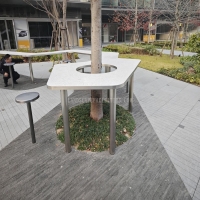Welcome to the website for landscape facilities products and knowledge.
How does wrought iron resist bending in landscape sculpture?
Wrought iron has long been a favored material for landscape sculptures due to its exceptional ability to resist bending and maintain structural integrity. This resistance stems from its unique composition and manufacturing process.
Unlike cast iron, wrought iron is worked (or "wrought") by hammering and rolling, which aligns its fibrous slag inclusions and creates a grain-like structure. This grain structure significantly enhances its tensile strength, making it far less prone to bending under stress. Additionally, wrought iron's low carbon content (typically less than 0.08%) contributes to its malleability while maintaining rigidity.
The material's natural corrosion resistance, especially when properly treated or galvanized, ensures that landscape sculptures retain their shape over time despite exposure to weather elements. Its workability also allows artists to create intricate designs without compromising strength.
For outdoor installations, wrought iron's combination of durability and flexibility makes it ideal for withstanding wind loads, temperature fluctuations, and occasional impacts while preserving the sculpture's artistic form. Modern metallurgical techniques have further enhanced these properties, ensuring wrought iron remains a premier choice for landscape artists worldwide.
Related search:

Recommendation
An outdoor bar counter with stainless steel and terrazzo materials in an irregular shape